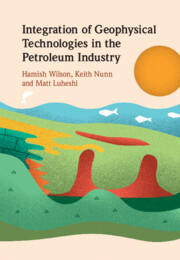Book contents
- Integration of Geophysical Technologies in the Petroleum Industry
- Integration of Geophysical Technologies in the Petroleum Industry
- Copyright page
- Contents
- Contributors
- 1 Introduction
- 2 The Hydrocarbon Exploration Process
- 3 Crustal Seismic Studies
- 4 Gravity and Magnetics
- 5 Full Tensor Gradiometry
- 6 Marine Electromagnetic Methods
- 7 Ocean Bottom Marine Seismic Methods
- 8 Microseismic Technology
- 9 A Road Map for Subsurface De-risking
- Glossary
- Index
- References
3 - Crustal Seismic Studies
Published online by Cambridge University Press: 25 November 2021
- Integration of Geophysical Technologies in the Petroleum Industry
- Integration of Geophysical Technologies in the Petroleum Industry
- Copyright page
- Contents
- Contributors
- 1 Introduction
- 2 The Hydrocarbon Exploration Process
- 3 Crustal Seismic Studies
- 4 Gravity and Magnetics
- 5 Full Tensor Gradiometry
- 6 Marine Electromagnetic Methods
- 7 Ocean Bottom Marine Seismic Methods
- 8 Microseismic Technology
- 9 A Road Map for Subsurface De-risking
- Glossary
- Index
- References
Summary
A brief historical review of the development of crustal seismic studies is presented including the importance of the Mohorovičić (Moho) Discontinuity and the basic composition of the earth's crust. The essential elements of Wide-Aperture Reflection and Refraction Seismics (WARRS) using wide-angle reflection and refracted diving waves are discussed with an explanation of how they can provide both P and S wave velocity models of the crust.
A discussion of the instrumentation used for collecting crustal seismic data both on- and off-shore is followed by four case studies from different environments. These demonstrate how crustal seismic data can be used to provide a regional understanding of the physical properties of the crust and the regional geology of the basin and its importance in the early exploration stage of the exploration and production process. The importance of integrating the crustal seismic data with other geophysical data to obtain an optimum geophysical model is stressed. This leads to a better understanding of the key geological processes that assists the exploration strategy. A brief discussion of the costs involved in acquiring crustal seismic data is presented.
Keywords
- Type
- Chapter
- Information
- Publisher: Cambridge University PressPrint publication year: 2021

